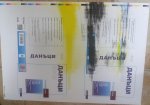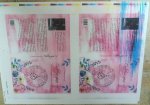Hi
we are ctp bureau. Time to time some our clients send us prints on attached photos. It's happen immediately after printing start. After cleaning with plate cleaner, problem solved.
We are producing plates for many printers. Some clients are happy when somebody reports such problem. Everything in both processors is checked so many times.
we are ctp bureau. Time to time some our clients send us prints on attached photos. It's happen immediately after printing start. After cleaning with plate cleaner, problem solved.
We are producing plates for many printers. Some clients are happy when somebody reports such problem. Everything in both processors is checked so many times.















